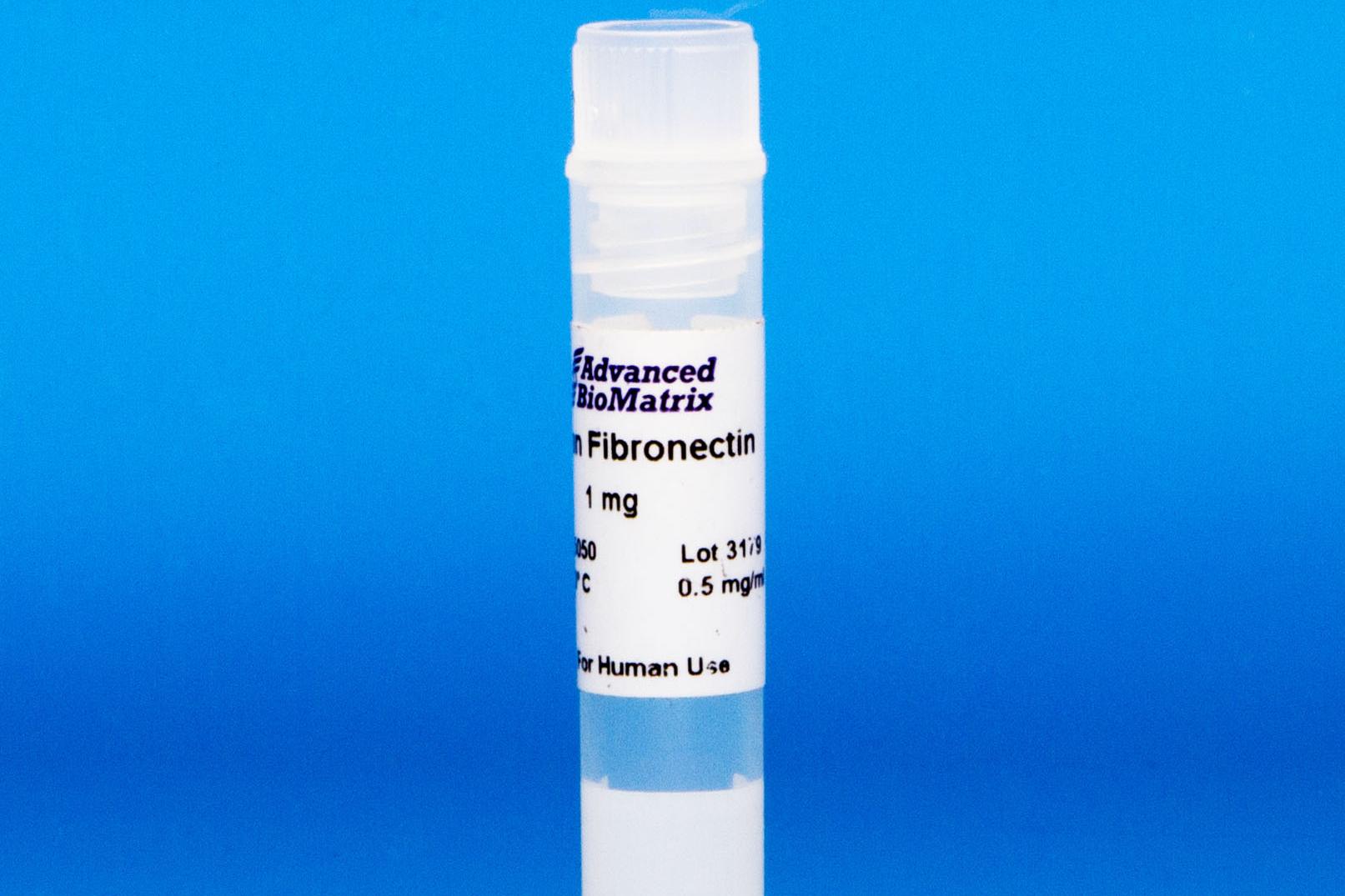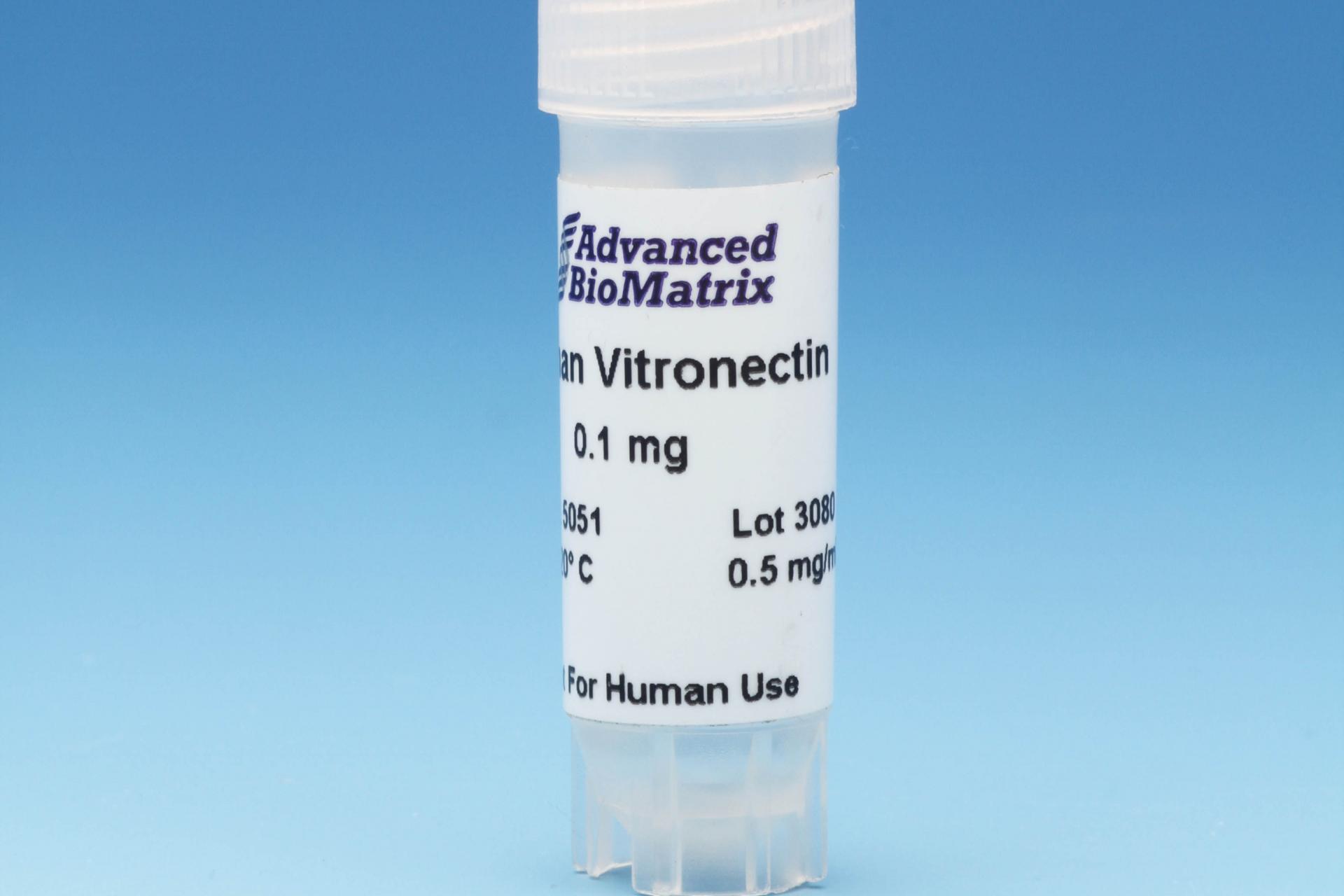-
Collagen
-
Type I - Atelocollagen
- PureCol® Solution, 3 mg/ml (bovine) #5005
- Nutragen® Solution, 6 mg/ml (bovine) #5010
- FibriCol® Solution, 10 mg/ml (bovine) #5133
- PureCol® EZ Gel, Solution, 5 mg/ml (bovine) #5074
- PureCol® Lyophilized, 15 mg (bovine) #5006
- VitroCol® Solution, 3 mg/ml (human) #5007
- VitroCol® Lyophilized, 15 mg (human) #5008
-
Type I - Telocollagen
- TeloCol®-3 Solution, 3 mg/ml (bovine) #5026
- TeloCol®-6 Solution, 6 mg/ml (bovine) #5225
- TeloCol®-10 Solution, 10 mg/ml (bovine) #5226
- RatCol® for 2D and 3D, Solution, 4 mg/ml (rat) #5153
- RatCol® High Concentration, Solution, 10 mg/ml (rat)
- RatCol® lyophilized, 100 mg (rat)
- RatCol® for Coatings, Solution, 4 mg/ml (rat) #5056
- Type I - Insoluble Collagen
- Type I - Bioinks
- Type II Collagen
- Type III Collagen
- Type IV Collagen
- Collagen Standard
-
PureCol® Collagen Coated Plates
- Custom-Coated Cultureware and Plates
- Collagen Coated T-25 Flasks #5029
- Collagen Coated 6-well Plates #5073
- Collagen Coated 12-well Plates #5439
- Collagen Coated 24-well Plates #5440
- Collagen Coated 48-well Plates #5181
- Collagen Coated 96-well Plates #5072
- Collagen Coated 384-well Plates #5380-5EA
- Collagen Coated 100 x 20 mm Dishes #5028
- MatTek Glass-Bottom Dishes
- MatTek Multi-Well Plates
- Collagen Scaffolds
- Collagen Hybridizing Peptides
-
Type I - Atelocollagen
- Tunable Stiffness
- CytoSoft® Rigidity Plates
-
Bioprinting
- Support Slurry for FRESH Bioprinting
-
Bioinks for Extrusion Bioprinting
- Lifeink® 200 Collagen Bioink (35 mg/ml) #5278
- Lifeink® 220 Collagen Bioink (70 mg/ml) #5343
- Lifeink® 240 Acidic Collagen Bioink (35 mg/ml) #5267
- Lifeink® 260 Acidic Collagen Bioink (70 mg/ml) #5358
- GelMA Bioink
- GelMA A Bioink
- GelMA C Bioink
- Pluronic F-127 40% Sterile Solution
- GelMA 20% Sterile Solution
- Alginate 5% Sterile Solution
- Photoinitiators
- Bioinks for BIONOVA X
- Bioinks for Lumen X
- DLP Printing Consumables
-
Create Your Own Bioinks
- PhotoCol® Methacrylated Collagen
- PhotoGel® Methacrylated Gelatin 95% DS
- PhotoGel® Methacrylated Gelatin 50% DS
- PhotoHA®-Stiff Methacrylated Hyaluronic Acid
- PhotoHA®-Soft Methacrylated Hyaluronic Acid
- PhotoAlginate® Methacrylated Alginate
- PhotoDextran® Methacrylated Dextran
- PhotoChitosan® Methacrylated Chitosan
- PEGDA (Various Molecular Weights)
- Silk Fibroin, Solution
- PhotoSericin® Methacrylated Sericin
- Bioprinters
-
3D Hydrogels
- Thermoreversible Hydrogel
- Silk Fibroin
-
Type I Collagen for 3D Hydrogels
- PureCol® Solution, 3 mg/ml (bovine) #5005
- Nutragen® Solution, 6 mg/ml (bovine) #5010
- FibriCol® Solution, 10 mg/ml (bovine) #5133
- PureCol® EZ Gel, Solution, 5 mg/ml (bovine) #5074
- VitroCol® Solution, 3 mg/ml (human) #5007
- TeloCol®-3 Solution, 3 mg/ml (bovine) #5026
- TeloCol®-6 Solution, 6 mg/ml (bovine) #5225
- TeloCol®-10 Solution, 10 mg/ml (bovine) #5226
- RatCol® for 3D gels, Solution, 4 mg/ml (rat) #5153
- HyStem® Thiolated Hyaluronic Acid
- Methacrylated Collagen
- Methacrylated Gelatin
- Methacrylated Hyaluronic Acid
- Diacrylates
- Collagen Sponges
- Methacrylated Polysaccharides
- Spheroids and Organoids
- Extracellular Matrices
- HyStem / Hyaluronic Acid
-
Adhesion Peptides / Proteins
-
Recombinant Adhesion Proteins
- CD2, 0.5 mg/ml #5086
- CDH3, 0.5 mg/ml #5124
- CDH13, 0.5 mg/ml #5125
- CD14, 0.5 mg/ml #5089
- CDH18, 0.5 mg/ml #5090
- CD40, 0.5 mg/ml #5093
- CD86, 0.5 mg/ml #5096
- CD164, 0.5 mg/ml #5100
- CD270, 0.5 mg/ml #5127
- CD274, 0.5 mg/ml #5126
- CD276, 0.5 mg/ml #5123
- E-Cadherin (CD324), 0.5 mg/ml #5085
- ICAM2, 0.5 mg/ml #5107
- Adhesion Peptides
- Collagen Hybridizing Peptides
-
Recombinant Adhesion Proteins
- Reagents
- Assays
Tropoelastin
Lyophilized (Recombinant)
Catalog #5052
Tropoelastin
Lyophilized (Recombinant)
Catalog #5052
This tropoelastin is produced using recombinant production methods. The tropoelastin is supplied as a sterile, lyophilized powder containing 1 mg per vial.
Product Description
Tropoelastin is the precursor to the elastin molecule. Elastin is found in many tissues of the body including the skin, arterial walls and ligaments. Elastin confers strength and elasticity to tissues and organs.
Tropoelastin is not normally available in its native state since it becomes cross-linked immediately after its synthesis by the cell, during its export into the extracellular matrix.
This tropoelastin is produced using recombinant production methods. The product is supplied as a sterile, lyophilized powder containing 1 mg per vial. A Certificate of Analysis is available with the purchase of each product.
Tropoelastin is typically used as a thin coating on tissue culture surfaces. Specific instructions are found in the Directions for Use. This product is generally used in vitro as a substrate scaffold to enhance cell attachment, adherence and proliferation.
| Parameter, Testing, and Method | Tropoelastin #5052 |
| Form | Lyophilized Powder |
| Package Size | 1 mg |
| Sterilization Method | Irradiation |
| SDS PAGE Electrophoresis | Characteristic |
| Source | Recombinant |
| Storage Temperature | -20°C prior to reconstitution and 2-10°C after reconstitution |
| Shelf Life | Minimum of 6 months from date of receipt |
| Endotoxin | < 10.0 EU/mL |
| Cell Attachment Assay | Passes |
| Sterility - USP modified | No growth |
Directions for Use
Recommended Volumes for 2D Coatings or 3D Hydrogels
Download the full PDF version or continue reading below:
Preparation Procedure:
1. Add 1 ml of sterile 0.25% glacial acetic acid solution to the tropoelastin serum vial containing 1 mg.
2. Mix contents gently until material is completely solubilized. The solution may remain slightly hazy.
3. Transfer desired volume of solution from the serum vial to a dilution vessel if required. Further dilute to desired concentration using sterile 0.25% acetic acid solution. A typical working concentration may range from 1 to 50 μg/ml.
4. Add appropriate amount of diluted tropoelastin material to the culture surface.
5. Incubate at room temperature or 37°C, covered, for 1-2 hours.
6. After incubation, aspirate any remaining material.
7. Rinse coated surfaces carefully with sterile dH2O– avoid scratching surfaces.
8. Coated surfaces are ready for use. They may also be stored at 2-10°C damp or air dried if sterility is maintained.
Product Q & A
E. Coli

Tropoelastin is produced from full length sequence as a full-length protein. Tropoelastin is the soluble pre-cursor to elastin as it is made in vivo. In the body, a leader sequence is cleaved off of tropoelastin which takes it from a soluble format inside the cell to a solid cross-linked elastin fibrous protein. One major advantage of being able to work with a full length tropoelastin is that it retains much of its native properties, far more than any peptide sequence.
Yes – there is a poly-His tag at the carboxy terminus.
No.
The tropoelastin is soluble in water at a pH below 6.5 to 7 and at temperatures below 30°C. Tropoelastin will tend to precipitate at higher pH and temperatures approaching 37°C. Solubility in water improves with lower pH. Tropoelastin is soluble in acetic acid.
Tropoelastin will form a stable solution at a concentration of up to 100 mg/ml.
Tropoelastin is soluble in butanol and hexafluoro propanol.
Product References
Tropoelastin References:
Ying, M. Modeling Aggressive Medulloblastoma Using Human-Induced Pluripotent Stem Cells. (2015). doi:10.21236/ada620932
Ford, A. C., Machula, H., Kellar, R. S. & Nelson, B. A. Characterizing the mechanical properties of tropoelastin protein scaffolds. MRS Proceedings1569,45–50 (2013).
Sinha, A., Nosoudi, N. & Vyavahare, N. Elasto-regenerative properties of polyphenols. Biochemical and Biophysical Research Communications444,205–211 (2014).
Product Certificate of Analysis
No result for .
Product Disclaimer
This product is for R&D use only and is not intended for human or other uses. Please consult the Material Safety Data Sheet for information regarding hazards and safe handling practices.







